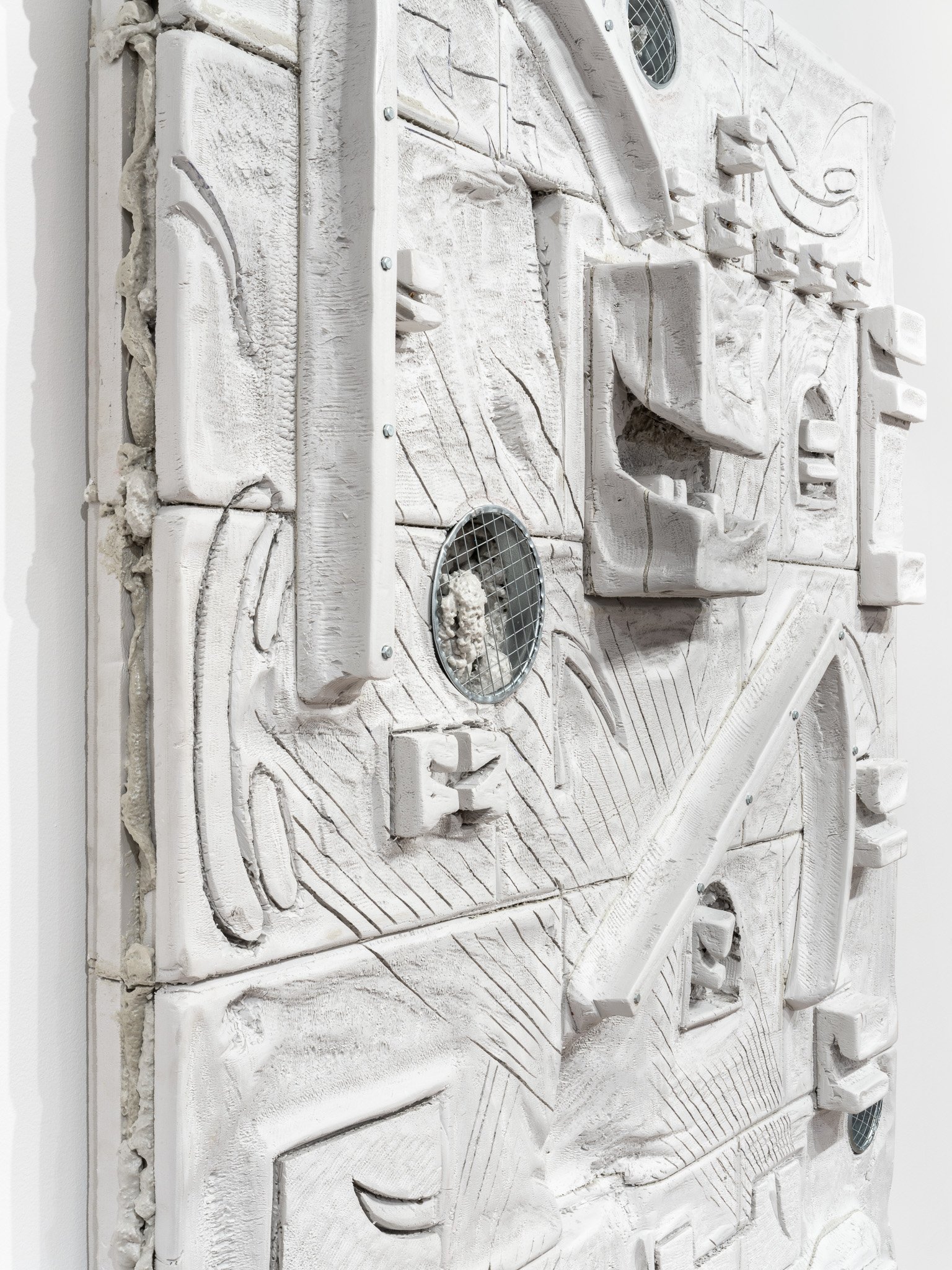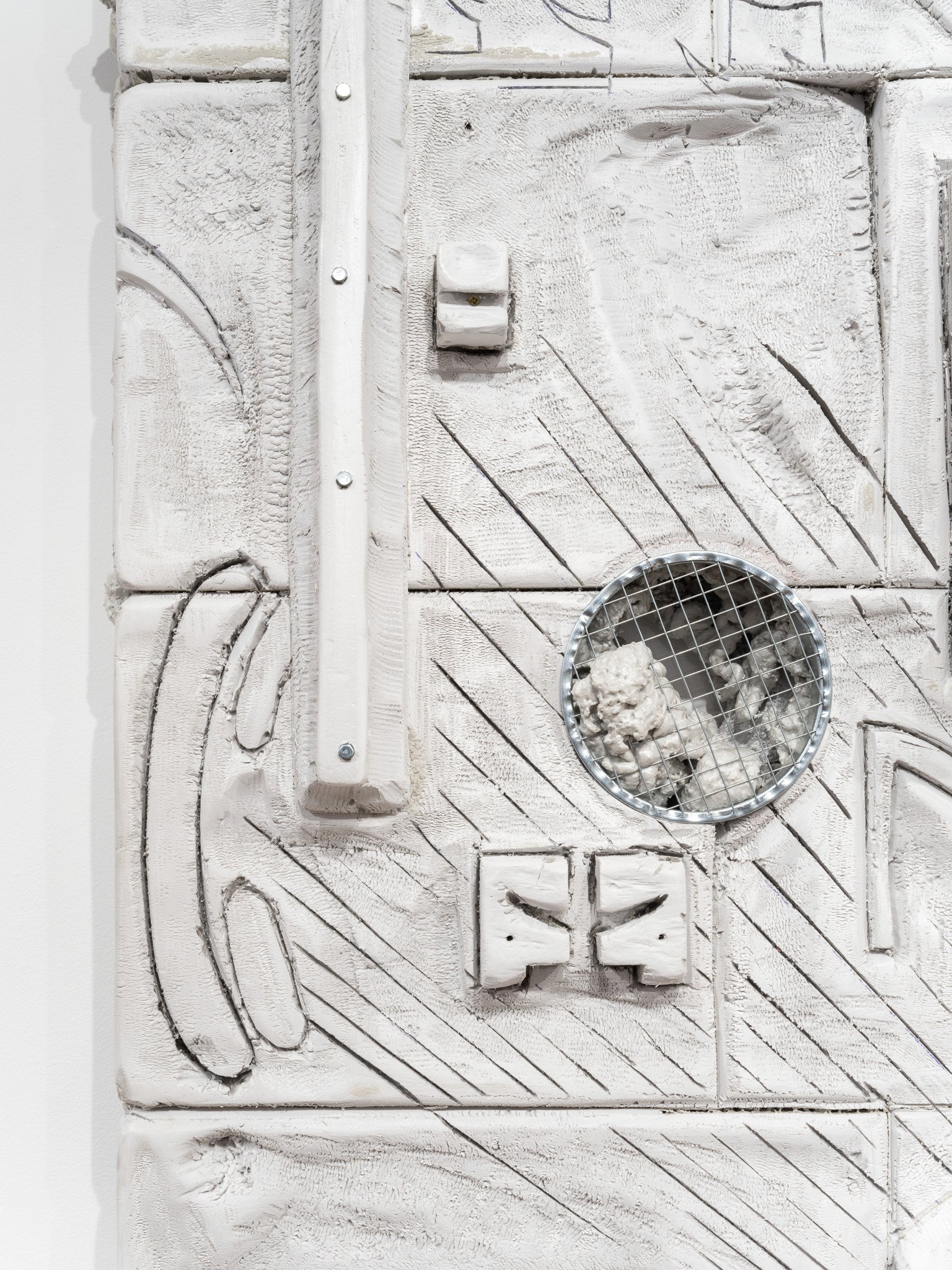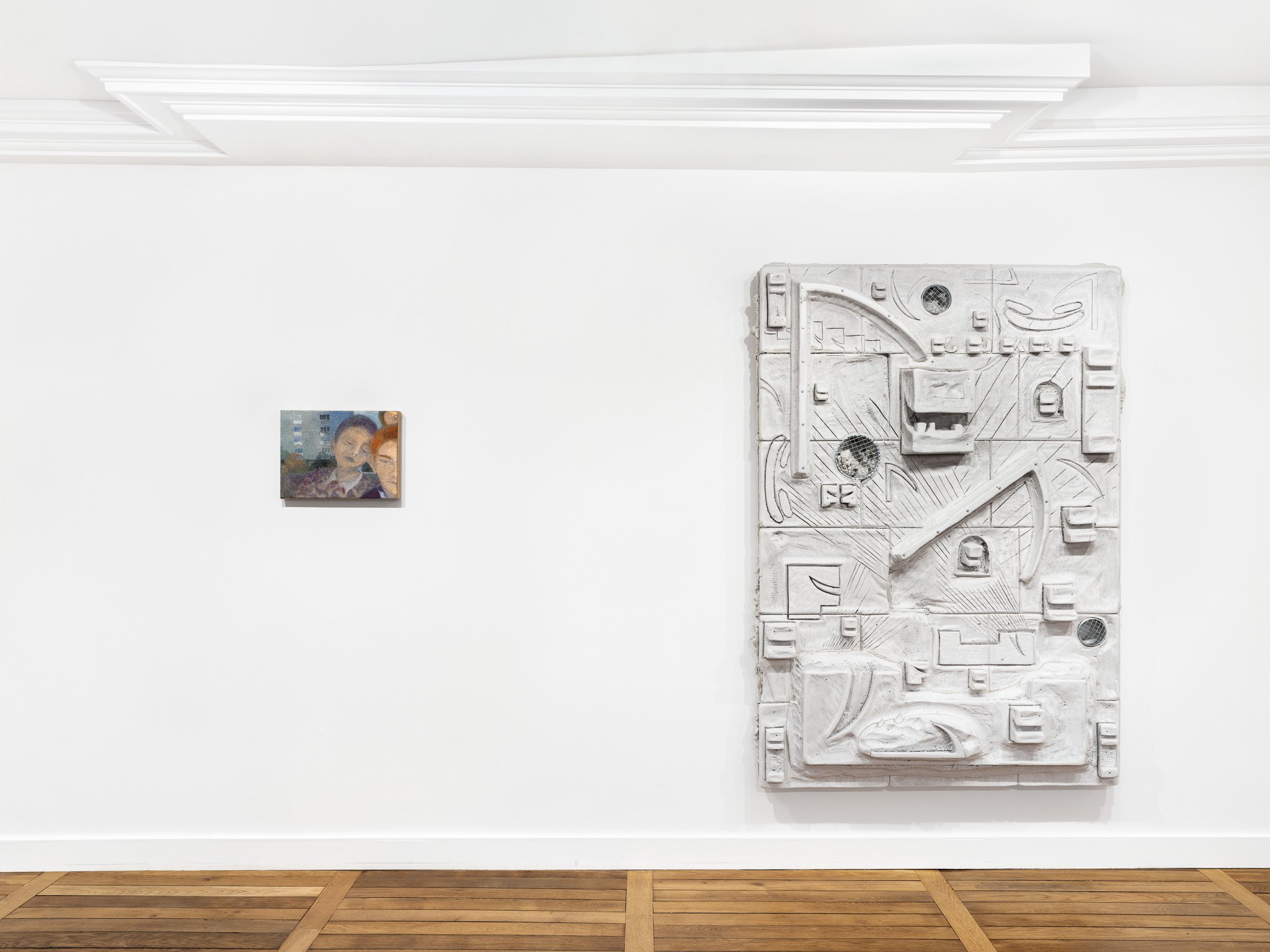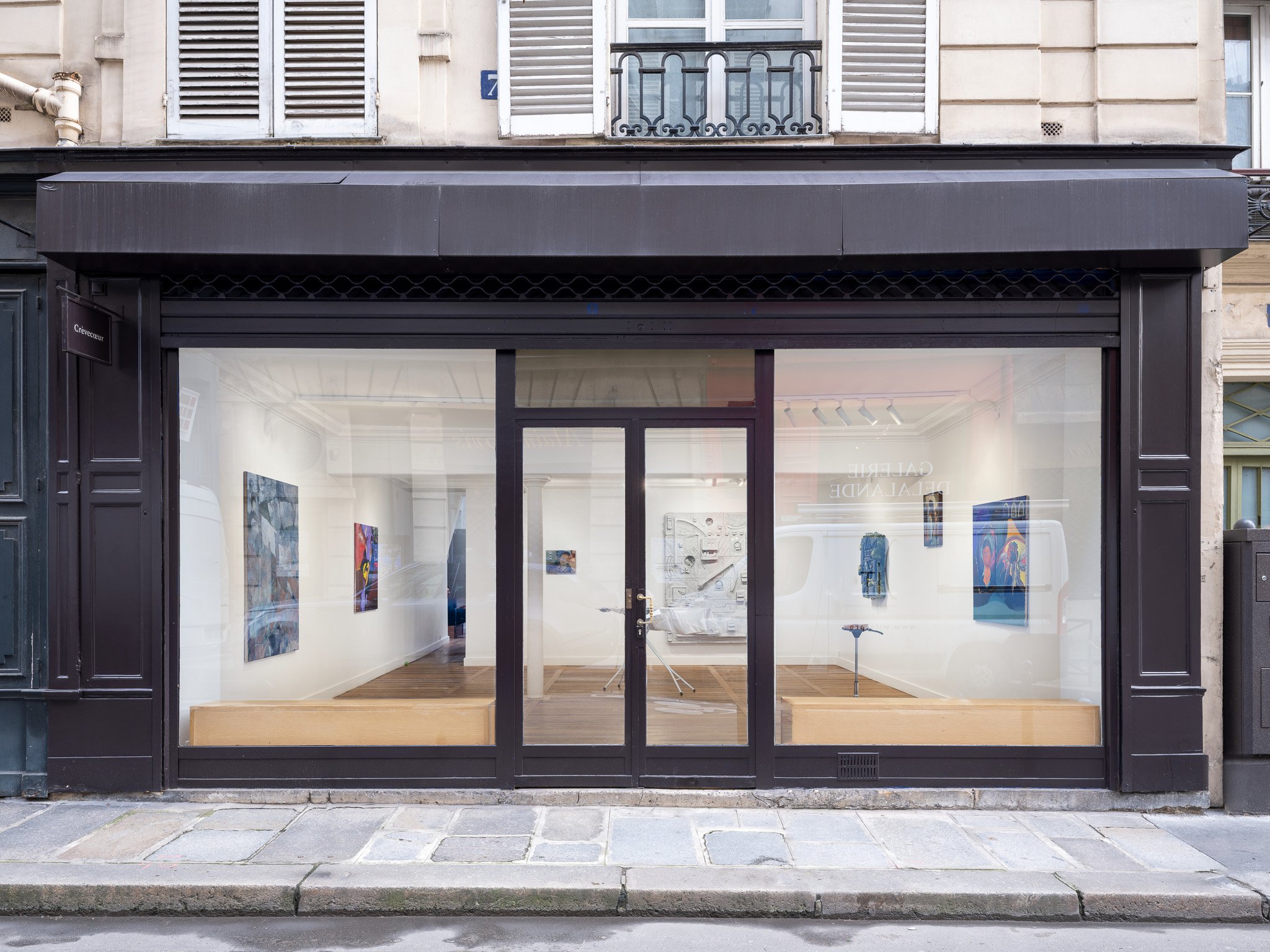
it was a hot day, a day that was blue all through, Crèvecœur,
Paris, France, 2024
It Was a Hot Day, a Day That Was Blue All Through (Ladji Diaby, Inès Di Folco Jemni, Tomasz Kowalski, Cezary Poniatowski, Peng Zuqiang)
Venue Crèvecœur, Paris, France
Date February 9 - April 13, 2024
Photography Martin Argyroglo











Press Release
“It was a hot day, a day that was blue all through,” we can read in the opening paragraphs of Nabokov’s Invitation to a Beheading, written in 1932. According to the author, it is his most poetic novel. A dystopic tale in which the main character — a prisoner waiting for his sentence to be carried out — invents an imaginary world made up of metaphors and allusions. In which a day can become blue, a jailer can waltz and a spider can talk. The novel’s controversial end suggests that the prisoner escapes from being executed thanks to his imagination, which transports him on a journey between time and space. Azar Nafisi analysed this book in her autobiographical novel, Reading Lolita in Tehran (2002). While teaching western literature at the University of Tehran during the 1979 revolution, she extolled the strength of fiction and its transcendent power. She wrote how, under a regime that annihilates metaphors and allusions, the understanding of stories and of literature withers away. Fiction becomes flat and banal in the service of a cause and the nuances of narrative disappear.
Daring to lay down an image, to hold reality at a distance, to liberate yourself from it or deny it are all ways that artists have created in order to be free. Fiction persists in artworks despite the chaotic confusion of new data, and despite a perpetual and monotonous din. Stories, metaphors and imaginary tales lie at the heart of this exhibition.
There has been much talk of the apocalyptic aesthetic of Cezary Poniatowski’s works in relief, made of imitation leather, carpets, extruded polystyrene or insulation foam. This is science fiction conveyed by forms and objects often codified as coming from Eastern Europe. Through the prism of memory, symbols and a sardonic sense of humour, these reliefs describe a technocratic world, awaiting transformation.